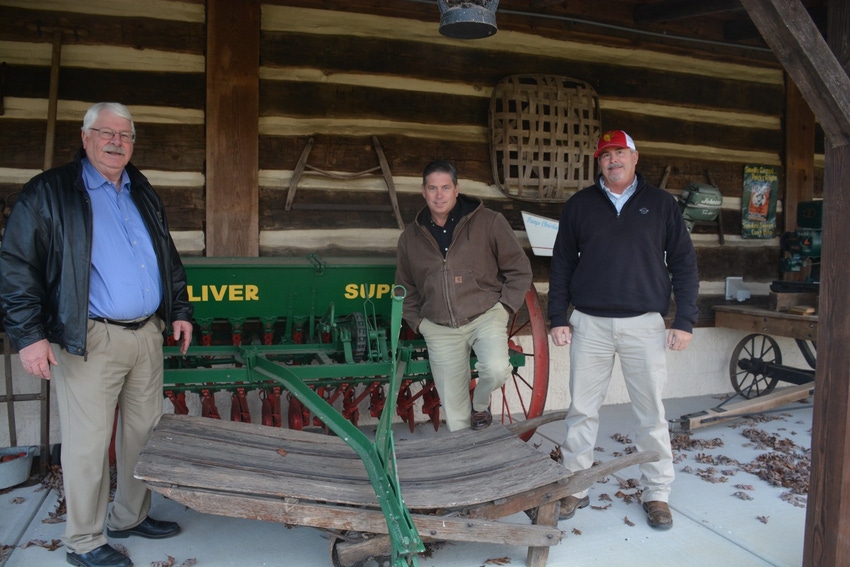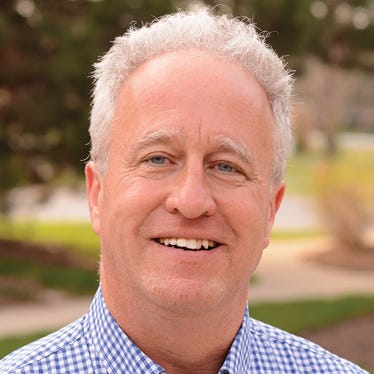
North Carolina tobacco is coming off one of the most challenging years it as ever seen, but there is hope on the horizon.
That’s one point both North Carolina Agriculture Commissioner Steve Troxler and Graham Boyd, executive vice-president of the Tobacco Growers Association of North Carolina, drove home in an interview with Southeast Farm Press on the commissioner’s farm in Browns Summit, N.C. Dec. 1.
“The 2020 crop was the smallest tobacco acreage we planted in North Carolina in 150 years. Our farmers are having to endure enormous challenges on so many fronts, weather, markets and policy, and then you throw in the pandemic, and our farmers had to manage how they provided the proper safety protocols for their employees and family members,” Boyd said.
USDA pegged flue-cured tobacco acreage at 92,000 acres in 2020, down 21 percent from 2019. Boyd estimates final delivery of tobacco to the 2020 market will be roughly 215 million pounds, compared to roughly 1.2 billion pounds in 1997 — valued at $2 billion — the year before he took the helm as TGANC’s top executive.
Boyd notes that tobacco was “king” when he joined the association in 1998. He said the production and market challenge for North Carolina tobacco is how to rebound to 400 million pounds as the minimum.
“If we can obtain that size acreage footprint then tobacco will once again be a $1 billion value crop at the farm gate. That would be huge to the rural economy,” Boyd said.
China, U.S. tobacco’s largest customer, stayed away once again in 2020 due to trade disputes and the U.S. saw declines in other markets as well. Boyd noted that tobacco farmers faced pressure to compete globally with the smallest crop the state ever planted which put pressure on margins. Through it all, the cost of production went up.
Boyd said one bright spot on the policy front was the inclusion of tobacco in CFAP 2 ( the Coronavirus Food Assistance Program). He credits the work of the association, the strong leadership of Commissioner Troxler and the support of Mark Meadows, President Donald Trump’s chief of staff for making the inclusion happen.
CFAP 2 provides producers with financial assistance that gives them the ability to absorb some of the increased marketing costs associated with the COVID-19 pandemic.
Tobacco was left out of CFAP 1, so industry leaders took steps to find a way to include tobacco in CFAP 2. Boyd noted that tobacco was left out of the first CFAP in May due to technical language. Industry leaders worked on language to show why tobacco should be eligible for the program.
“We worked with the Kentucky Department of Agriculture and Farm Bureau in North Carolina and Kentucky. We submitted that appeal in a unified version in July,” Boyd explained.
Boyd credits the leadership of Troxler, working closely with Meadows, in making the CFAP 2 funding a reality for tobacco farmers. He also credited the work of North Carolina State University Economist Blake Brown for developing the economic models, data and tables that illustrated the tobacco industry’s case.
“The credit goes to Commissioner Troxler for pushing the political aspect to make sure we got a fair hearing. The commissioner got the message to the president’s chief of staff (Meadows) so it could be heard. We had to make a legitimate argument and we had to substantiate our qualifications and we had to submit those,” Boyd said.
“It was a heavy, heavy lift,” he said. “We stressed that our tobacco farmers are growing a legal, legitimate commodity and it should be treated the same as other commodities.”
In the meantime, Troxler noted that the success in including tobacco in CFAP all came down to good relationships.
“Mark Meadows and I have been good friends for a long time. I have a really good relationship with (Agriculture) Secretary Perdue. The two of them flew down and we had a meeting, and out of that meeting they were able to figure out a way not to use CCC (Commodity Credit Corporation) funds, but to find other monies to get tobacco involved in it (CFAP 2), and we will be forever thankful for that,” Troxler said.
Categorizing tobacco as a sales commodity where CFAP 2 payments will be calculated on a sales-based approach was considered key in including tobacco in the payments. Tobacco is a unique commodity in that payments under CFAP 2 are not authorized through the CCC Charter Act, but instead through the authority of the Coronavirus Aid, Relief, and Economic Security (CARES) Act.
Troxler pointed to numbers that show tobacco farmers will get roughly $27 million of the roughly $153 million in CFAP 2 funds. With tight margins and tobacco farmers losing equity, Troxler said the assistance funds were a must in 2020. Boyd emphasized that all of the funds will be used by tobacco farmers to service operational debt.
In the meantime, both Troxler and Boyd are optimistic that China will return as a customer as early as 2021. The loss of the No. 1 market for North Carolina was a devastating blow when trade skirmishes closed the market in April 2018. Both believe the return of China as a market will help boost flue-cured acreage in North Carolina.
“I feel really good about China getting back in the market. But until there is a check signed and tobacco going over on a boat, I don’t take anything for granted. I also hope that in 2021 we can get domestic suppliers to increase the volume of the tobacco they purchase here,” Troxler said.
While U.S. tobacco does offer a quality advantage, Troxler noted the strong U.S. dollar and competition from low-cost producers such as Brazil and Zimbabwe makes it difficult for U.S. tobacco farmers to compete in the export market. Low-cost producers with cheap labor still face an advantage over U.S. tobacco.
“We are probably the most efficient tobacco producers in the world, but when you throw high labor cost into it, that kind of throws everything out the window,” Troxler said.
For example, he noted that when he visited Brazil he learned the average grower was producing five acres of tobacco and they were making $5,000 per year which was their total income. “How can a farmer in the United States live on $5,000 a year? We can’t do it,” he said.
Read more about:
TobaccoAbout the Author(s)
You May Also Like






